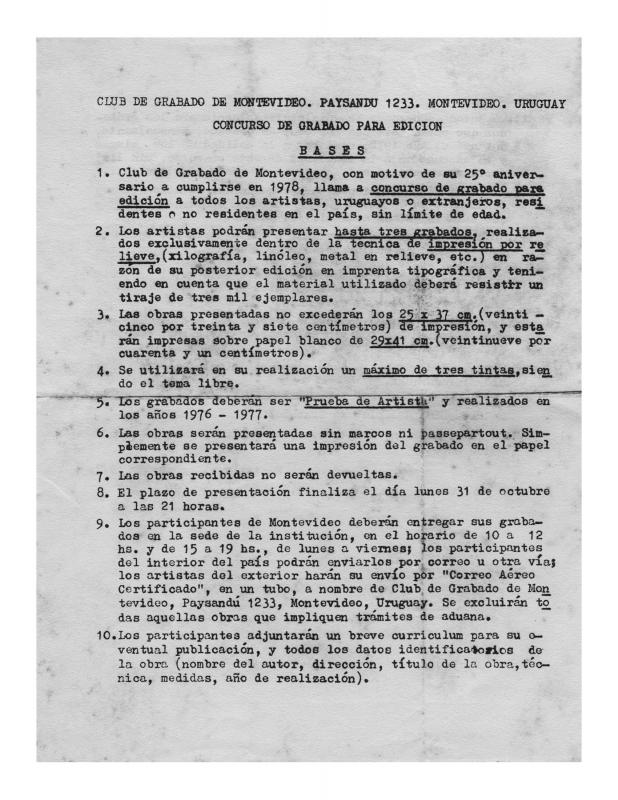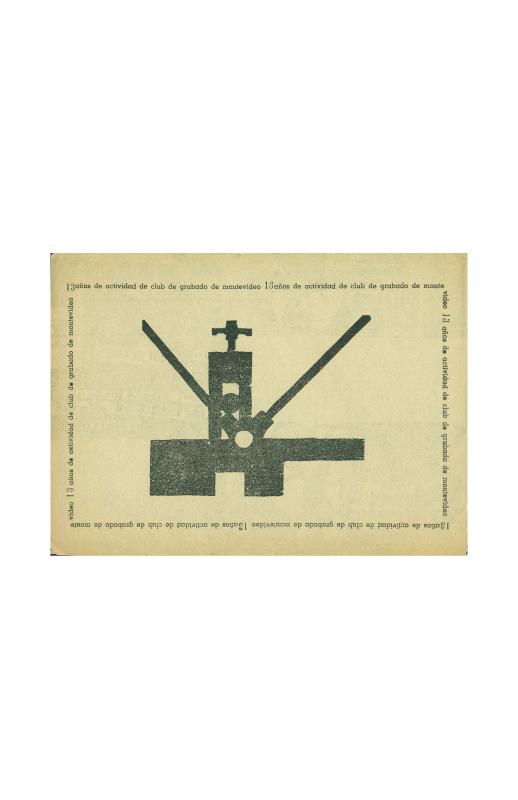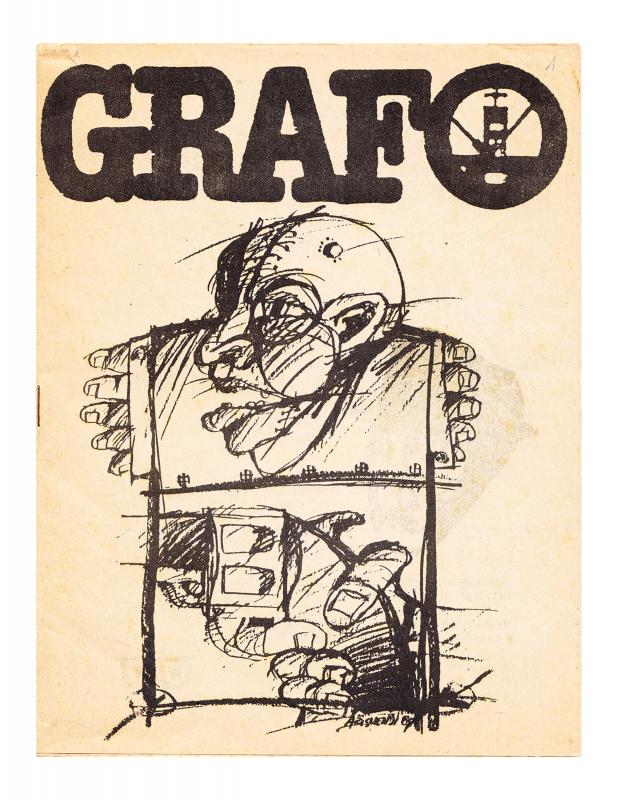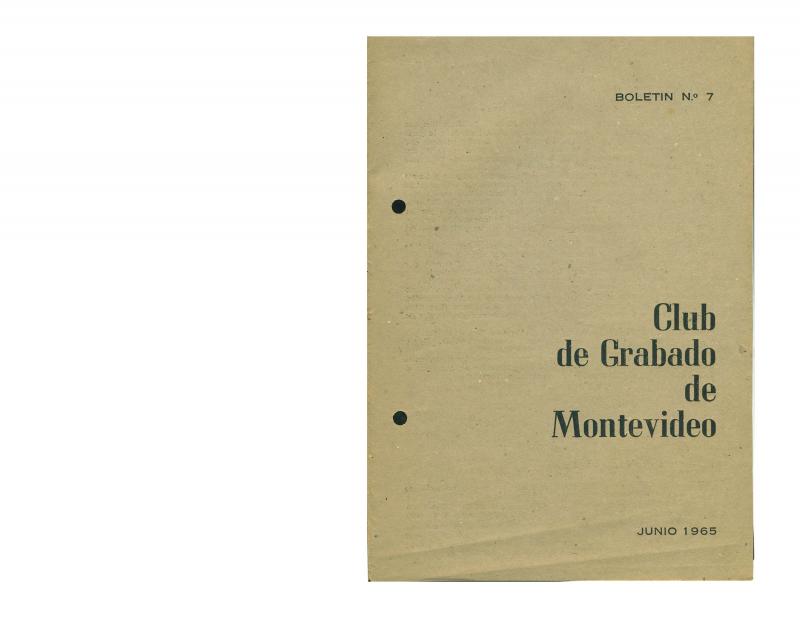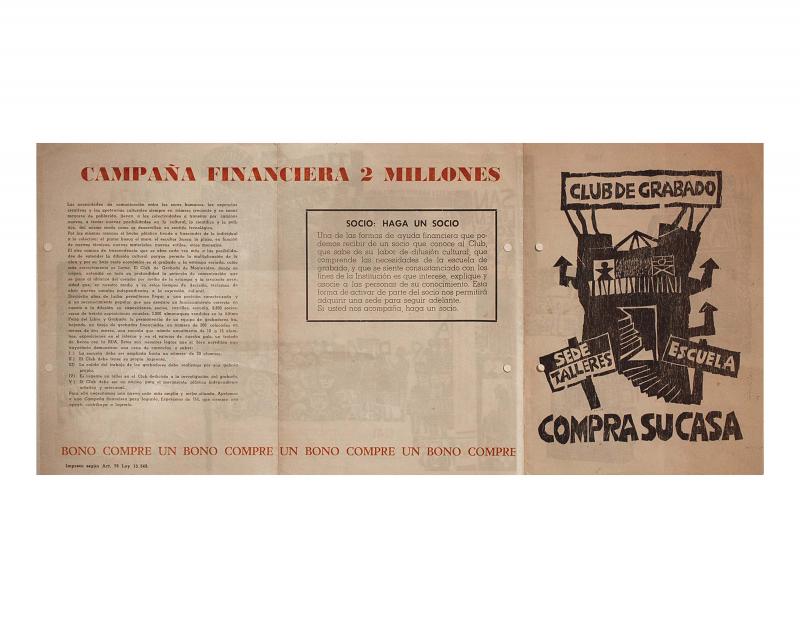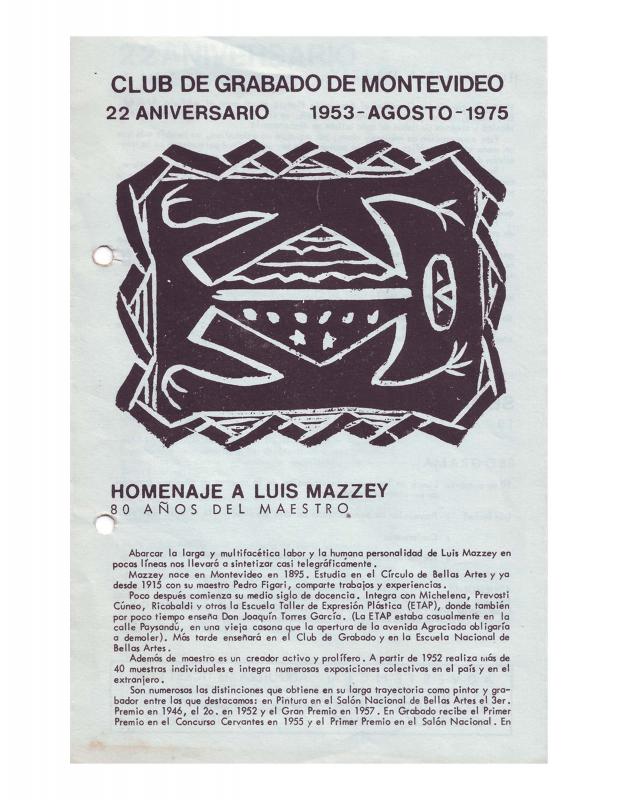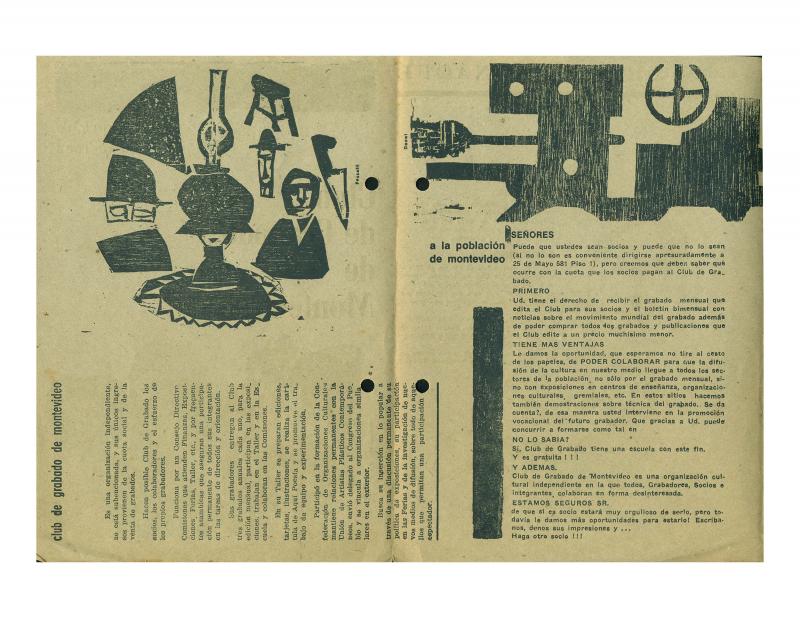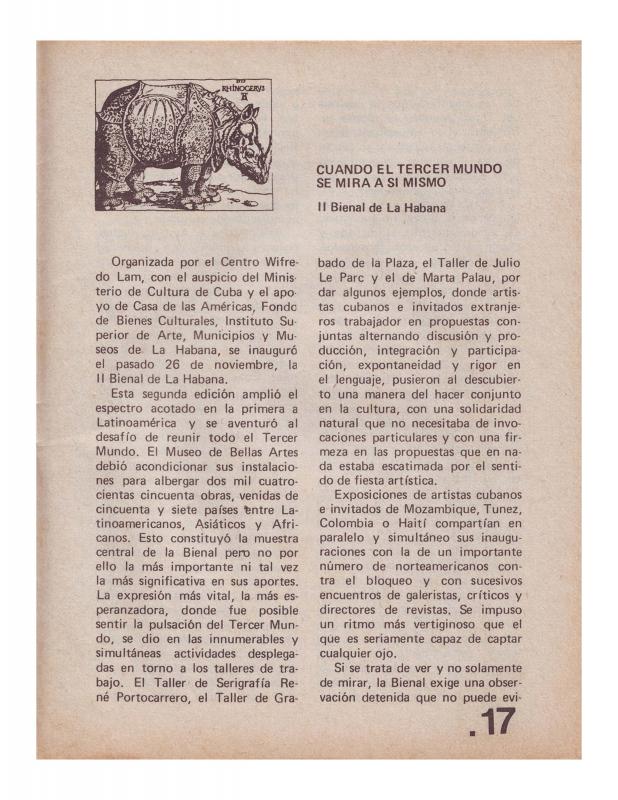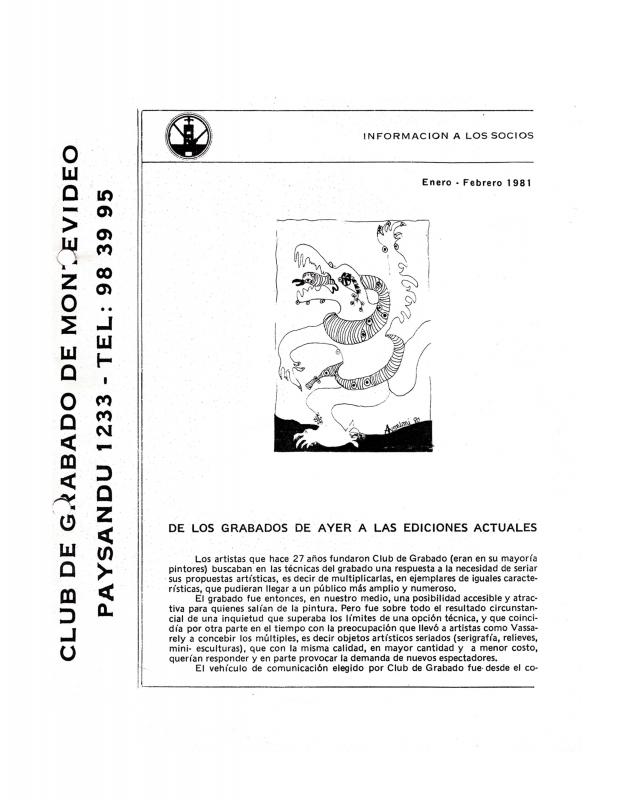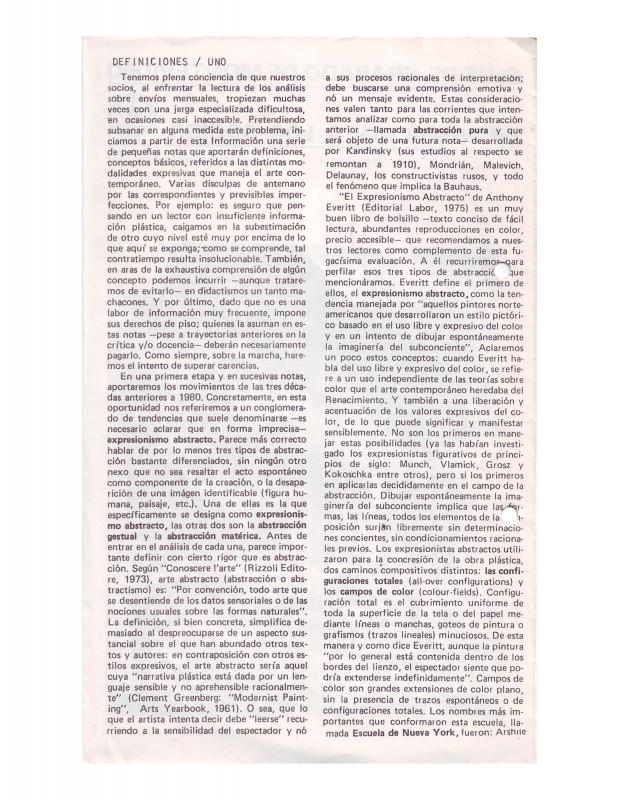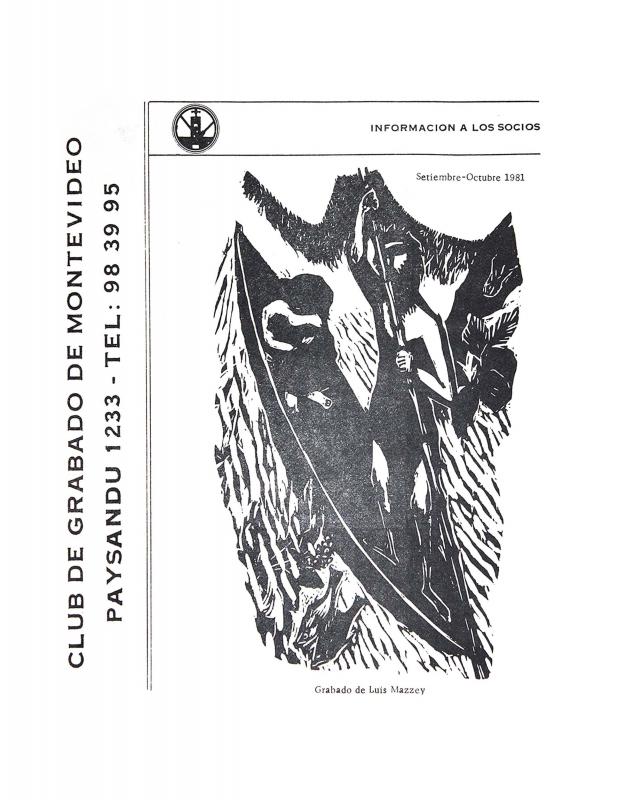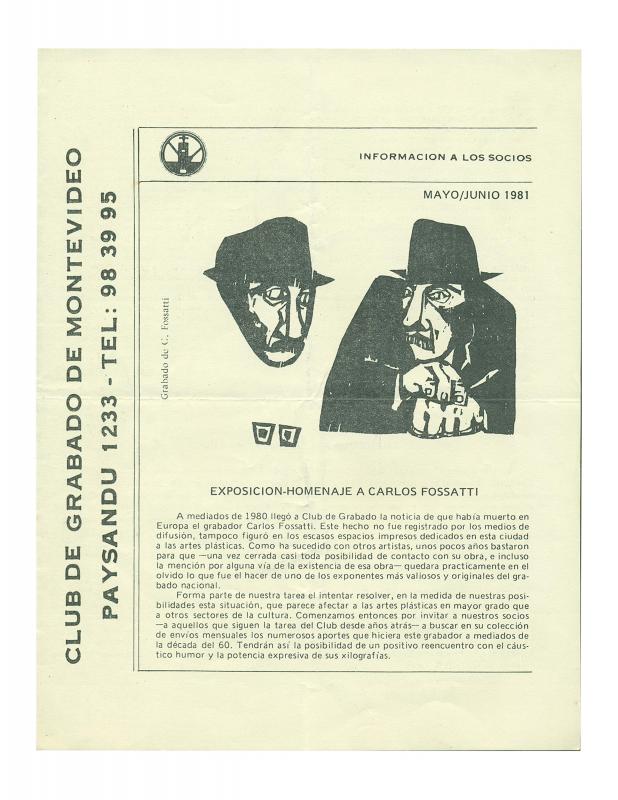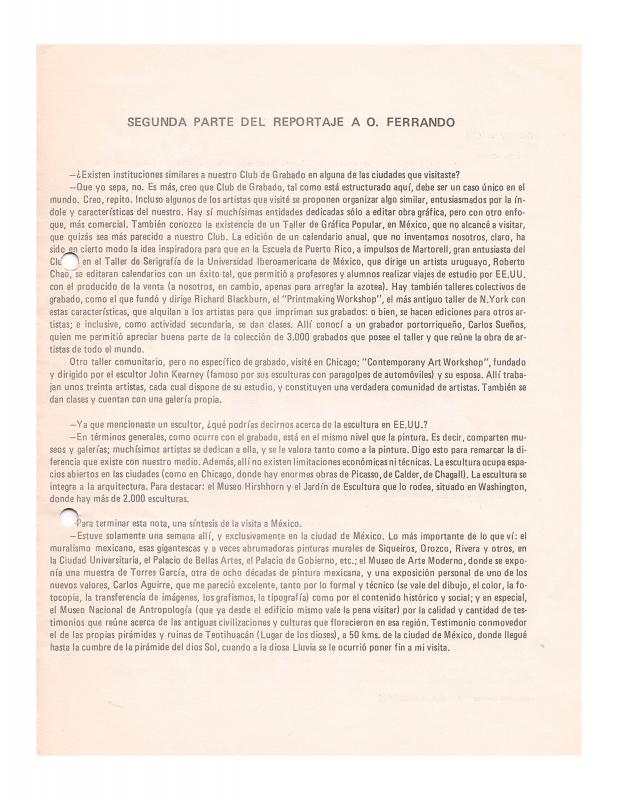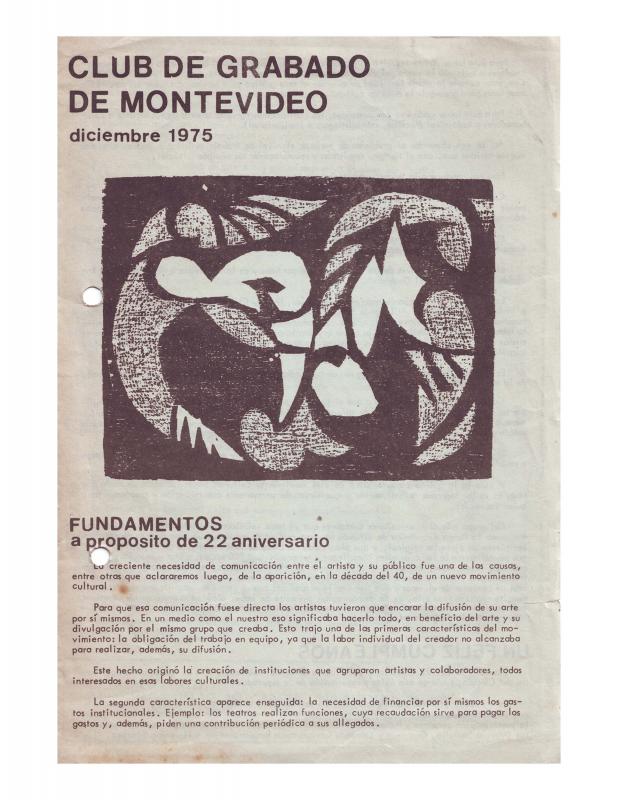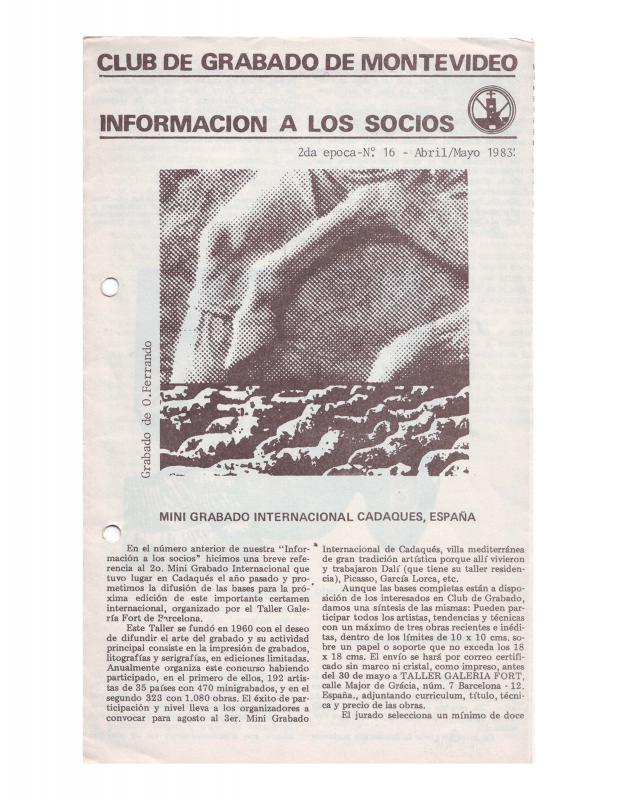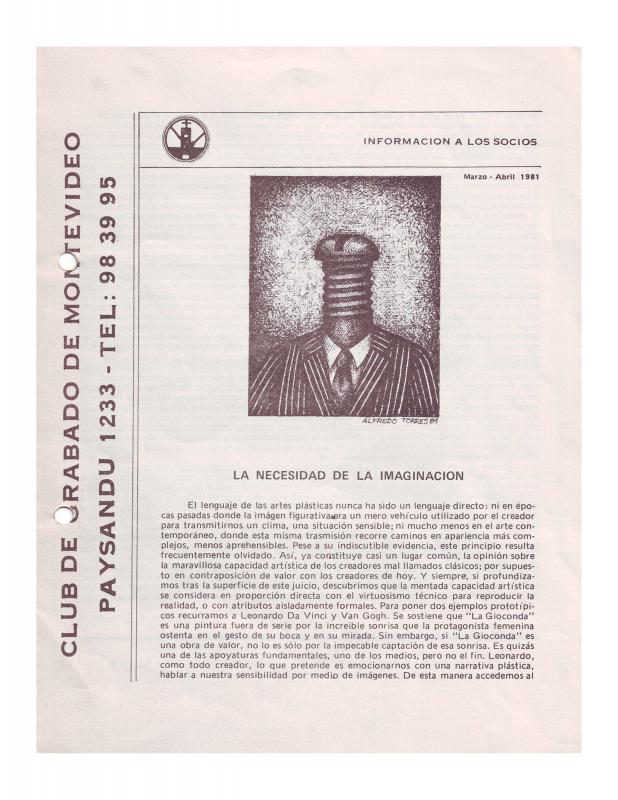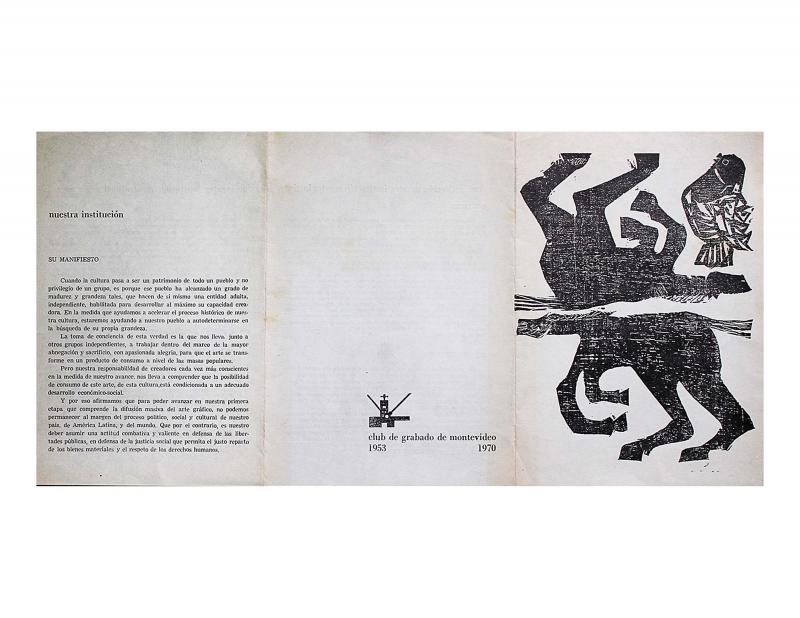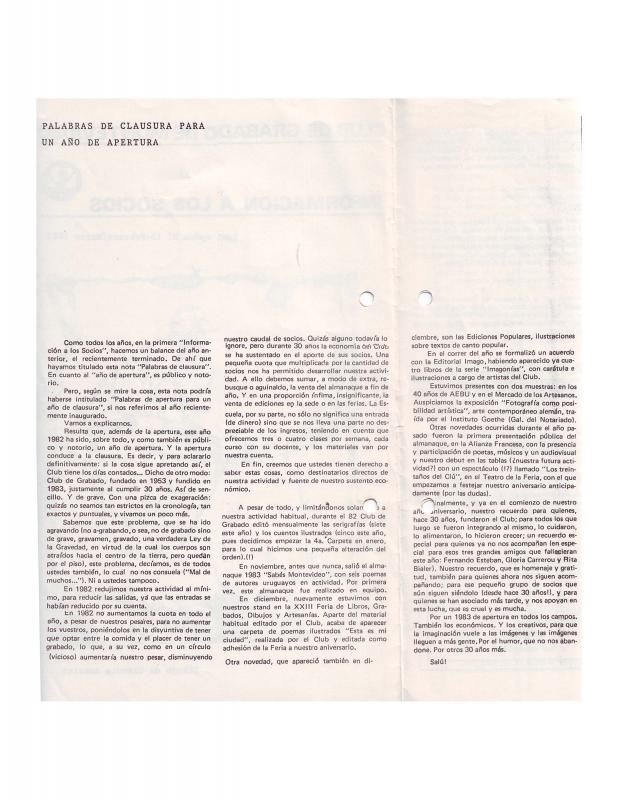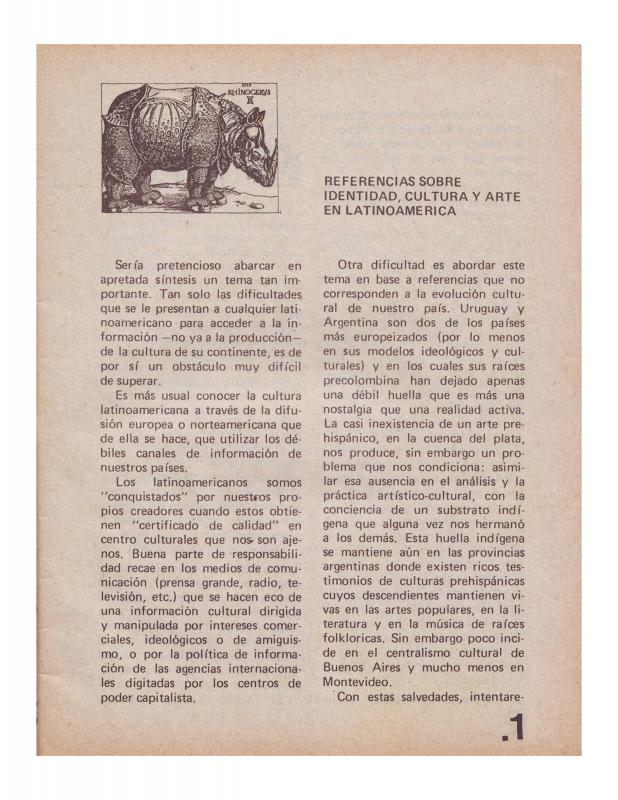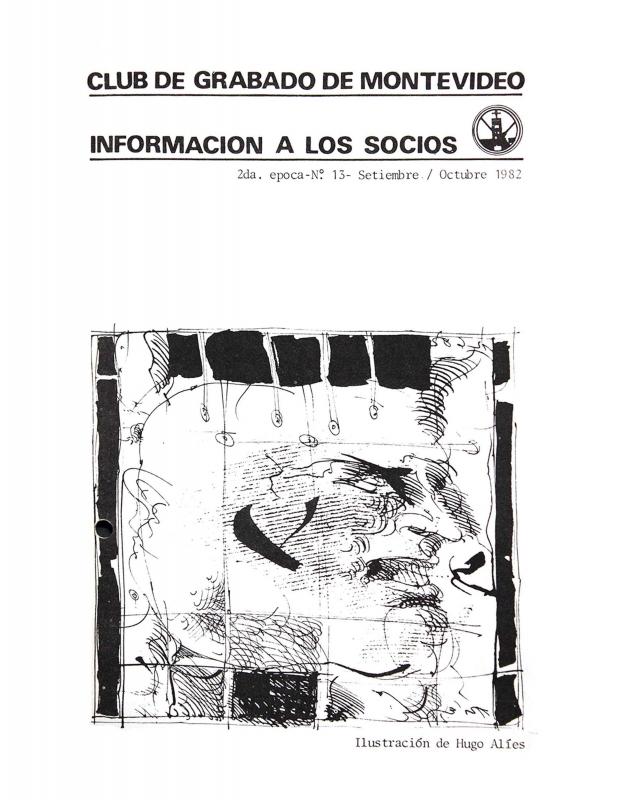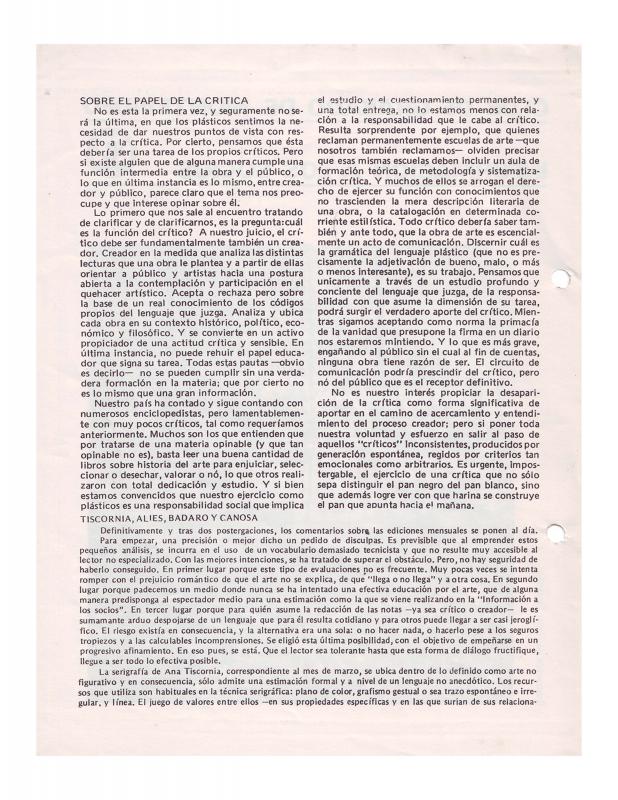A number of member-supported cultural groups were founded in Montevideo in the 1940s (Cine-Club, Foto-Club, Club de Teatro, and so on). The CGM (Club de Grabado de Montevideo) was started in 1953 and established a particular aesthetic model that was influenced by printing techniques and political goals; their works sought to address “the people” as a generic body that encompassed the full range of social classes. The objective was to break with the concept of class distinction and instead focus on aesthetic preferences. The group’s communiqué, published in 1956, addressed the need to involve as many artists and members as possible in order to promote the production of prints that would allow artists to speak directly to the public via multiple copies of their works. The document describes the participants’ skills and the group’s accomplishments since it was founded. The goal was to encourage a decentralization of cultural activities beyond the confines of the capital city of Montevideo (initially targeting the departments of Salto and Paysandú), and to produce images that conveyed a certain sense of “national identity” based on middle class cultural ideals and structures. The group’s international aspirations were also apparent in its desire to reach out to art groups in other parts of Latin America (Porto Alegre, Rio de Janeiro, Buenos Aires, Mendoza, and Santiago de Chile) and Europe (Warsaw). The document also acknowledges the support of a number of printmakers in Uruguay, such as Fernando Cabezudo (1927–2014), Glauco Capozzoli (1929–2003), Manuel Collazo Castro (1892–1953), José Cziffery (1902–65), Nicolás Cúparo (1906–76), Leonilda González (1923–2017), Anhelo Hernández (1922–2010), Luis Mazzey (1895–1983), Roberto Orlando, Amalia Polleri (1909–96), and Susana Turiansky, among many others.
[As complementary reading see, in the ICAA digital archive, the following texts published by the Club de Grabado de Montevideo: “Concurso de grabado para edición” (doc. no. 863481); “13 años de actividad de Club de Grabado de Montevideo” (doc. no. 1183571); “El arte correo en el Uruguay” (doc. no. 1191850); “Boletín N° 7 Club de Grabado de Montevideo” (doc. no. 1182833); “Club de Grabado compra su casa” (doc. no. 1192649); “Club de Grabado de Montevideo 22 Aniversario 1953 - Agosto 1975” (doc. no. 1183514); “Club de Grabado de Montevideo a la población de Montevideo” (doc. no. 1183124); “Cuando el Tercer Mundo se mira a sí mismo. II Bienal de La Habana” (doc. no. 1184459); “De los grabados de ayer a las ediciones actuales” (doc. no. 1191787); “Definiciones / Uno” (doc. no. 1189065); “Entrevista a Luis Mazzey” (doc. no. 1186991); “Entrevista a Óscar Ferrando” (doc. no. 1186747); “Entrevista a Óscar Ferrando [segunda parte]” (doc. no. 1186802); “Fundamentos a propósito de su 22 aniversario” (doc. no. 1182640); “Mini Grabado Internacional de Cadaqués. España” (doc. no. 1191135); “La necesidad de la imaginación” (doc. no. 1190793); “Nuestra institución” (doc. no. 1182010); “Los nuevos movimientos de las artes” (doc. no. 1182868); “Opiniones (I)” (doc. no. 1185411); “Palabras de clausura para un año de apertura” (doc. no. 1191167); “Referencias sobre identidad, cultura y arte en Latinoamérica” (doc. no. 1183641); “Reflexiones en torno a la supuesta crisis de las artes plásticas” (doc. no. 1185539); and “Sobre el papel de la crítica” (doc. no. 1187071)].

